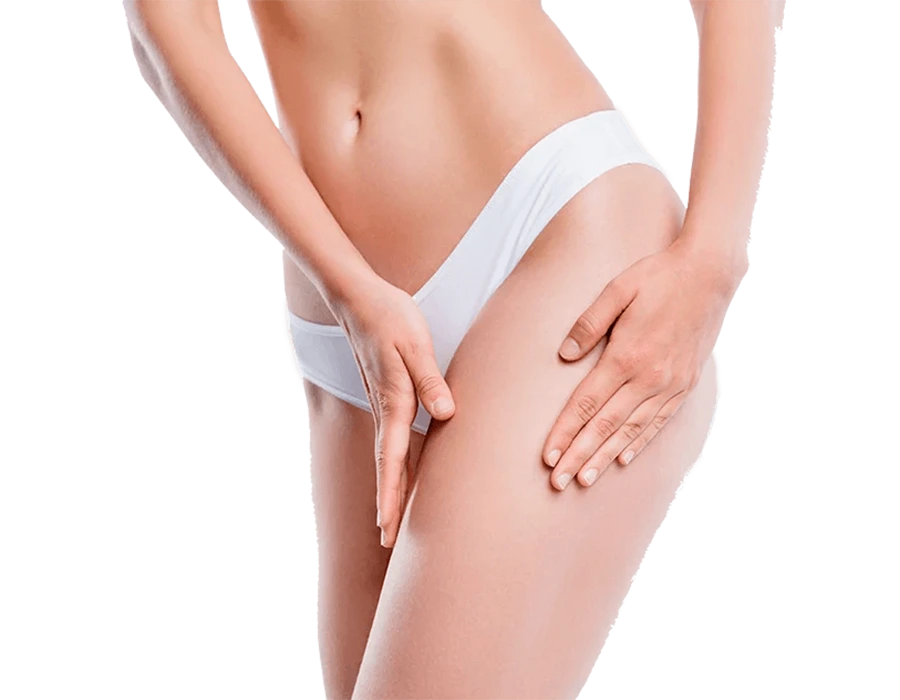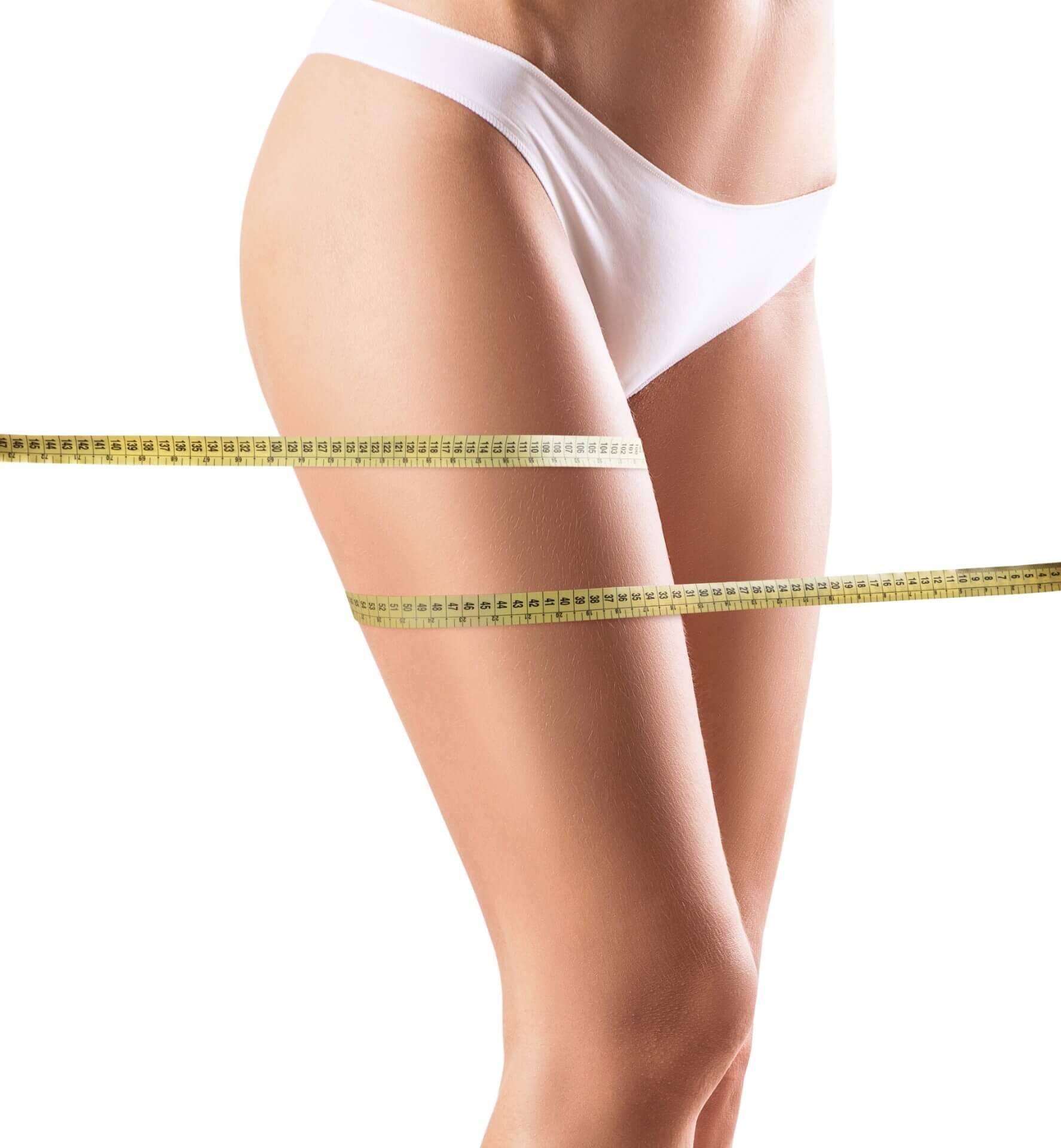Struggling with stubborn thigh fat? Liposuction for thighs could be your solution. This popular cosmetic procedure, including thigh liposculpture and outer thighs liposuction, targets unwanted fat, helping thigh liposuction patients achieve smoother and more contoured inner thighs liposuction. Many people find that diet and exercise alone don’t cut it when targeting fat bulges and fat areas, especially on the inner thighs, as noted in the book.
Liposuction can enhance your body shape, including outer thighs and inner thighs, and boost your confidence, helping you achieve that thigh gap you desire. It’s not just about aesthetics; it’s about feeling great in your skin, whether that includes outer thighs, a thigh gap, or even thigh lipo as part of the trend. With advancements in technology, thigh lipo is safer and more effective than ever. Thigh lipo recovery times are shorter, so you can get back to your routine quickly. Discover how liposuction for thighs can transform your look and elevate your self-esteem.
Key Facts About Thigh Liposuction
Procedure Overview
Liposuction for thighs involves removing excess fat from the inner or outer thigh areas. This procedure aims to reshape and contour the legs. Many people seek this surgery, including thigh lipo, to achieve a more balanced and proportionate leg appearance.
Surgeons use various techniques during the operation. They often perform it under local or general anesthesia. The choice depends on the amount of fat being removed and patient comfort. Local anesthesia numbs the area, while general anesthesia puts the patient to sleep.
Recovery Timeline
Recovery after thigh liposuction varies for each person. Most patients need about one to two weeks off work. During this time, swelling and bruising are common. Patients should avoid strenuous activities for several weeks.
Following the doctor’s guidelines is crucial for a smooth recovery. Wearing compression garments can help reduce swelling. These garments also support the healing process by keeping the skin tight against the muscle.
Results and Expectations
Results from thigh liposuction can be noticeable within a few weeks. However, final results may take up to six months to fully develop. Patients often enjoy a more sculpted appearance once healing is complete.
Satisfaction rates are generally high among those who undergo this procedure. Many report feeling more confident in their appearance afterward. It’s important to maintain a healthy lifestyle for long-lasting results.
Risks and Considerations
Like any surgery, thigh liposuction comes with risks. Possible complications include infection, bleeding, and uneven contours. Discussing these risks with a qualified surgeon is essential before proceeding.
Patients should also consider their health history. Certain medical conditions may affect eligibility for the procedure. A thorough consultation helps determine if thigh liposuction is a safe option.
Cost Factors
The cost of thigh liposuction varies based on several factors. These include the surgeon’s experience, facility fees, and geographic location. On average, patients may expect to pay several thousand dollars for the procedure.
Insurance typically does not cover cosmetic procedures like liposuction. Financing options may be available through clinics or third-party lenders.
Ideal Candidates for Thigh Liposuction
Stubborn Fat
Individuals looking into thigh liposuction often deal with stubborn thigh fat. This fat does not respond well to diet or exercise. Many people find that despite their best efforts, the fat remains. This can be frustrating and affect self-esteem. Thigh liposuction targets this specific area effectively.
Overall Health
Candidates must be in good overall health. Those with serious medical conditions should consult a doctor first. Conditions like heart disease or diabetes may complicate the procedure. A thorough evaluation helps ensure safety during surgery. Healthy individuals usually recover faster and have fewer complications.
Realistic Expectations
People considering this surgery should have realistic expectations about the results. Thigh liposuction can enhance body shape but will not change it entirely. Patients should aim for a noticeable thigh gap, but results vary by individual. Understanding what can be achieved is vital for satisfaction after the procedure.
Body Shape Considerations
The body shape plays a significant role in determining candidacy. Individuals with a small thigh gap may benefit more from this procedure. Those with wider thighs might also see improvements but need to manage their expectations. The goal is to create a balanced appearance that complements the waist and legs.
Age Factor
Age can influence candidacy as well. Most candidates are adults, generally between 18 and 60 years old. Younger individuals often have better skin elasticity, which aids in recovery. Older patients may face different challenges, such as slower healing times.
Consultation Process
A consultation with a qualified surgeon is essential. During this meeting, potential candidates discuss their goals and concerns. The surgeon evaluates physical leg shape and health history. This step ensures that thigh liposuction aligns with the patient’s needs.
Emotional Readiness
Emotional readiness is another crucial aspect of being a candidate. Surgery can be life-changing, and candidates should feel prepared for the journey. Support from family and friends can help ease anxiety surrounding the process.
Post-Procedure Care
Post-procedure care is important for successful outcomes. Candidates should follow their surgeon’s instructions closely. Proper aftercare promotes healing and improves overall results.
Benefits of Thigh Liposuction
Enhanced Contour
Thigh liposuction enhances the overall shape and contour of the thighs. This procedure removes stubborn fat deposits that do not respond to diet or exercise. Many individuals struggle with excess fat in their thighs, even when they are at a healthy weight.
Experts highlight that this treatment can create a more balanced silhouette. A well-contoured thigh can improve the appearance of the legs. Patients often notice a significant difference in their body proportions after the procedure.
Boosted Self-Confidence
Liposuction can also boost self-confidence and body image. Many people feel unhappy with their thighs due to excess fat. This dissatisfaction can lead to negative feelings about one’s body. After undergoing thigh liposuction, many report feeling more confident in their appearance.
Patients often find it easier to wear clothing they previously avoided. Skirts, shorts, and swimsuits become more appealing choices. Improved body image can positively affect social interactions and personal relationships.
Long-Lasting Results
Results from thigh liposuction can be long-lasting if patients maintain a stable weight. The procedure removes fat cells permanently, which means those areas will have fewer fat cells than before. However, gaining weight after surgery can still affect the results.
Experts recommend a healthy lifestyle post-surgery to keep results intact. Regular exercise and balanced nutrition play key roles in maintaining body shape. Following these guidelines can help individuals enjoy their new contours for years.

Consultation Importance
Consultation with qualified professionals is crucial before deciding on thigh liposuction. Surgeons assess individual needs and expectations during these meetings. They provide valuable insights into what results are achievable based on body type.
Understanding the procedure is essential for informed decisions. Experts explain potential risks and recovery timelines during consultations. This knowledge helps patients set realistic goals for their outcomes.
Risks of Thigh Liposuction
Infection Risks
Thigh liposuction carries the potential for infection. This can occur if bacteria enter the body during or after the procedure. Signs of infection include redness, swelling, and fever. Healthcare professionals often prescribe antibiotics to minimize this risk. Proper hygiene and following post-operative care instructions are crucial for recovery.
Bleeding is another concern during thigh liposuction. Some patients may experience excessive bleeding, which could require additional medical intervention. Adverse reactions to anesthesia also pose risks. These reactions can range from mild to severe, affecting breathing or heart rate.
Asymmetry Concerns
Uneven fat removal is a possibility with thigh liposuction. This can lead to asymmetry in the thighs, which may affect overall appearance. Surgeons aim for balanced results, but human error or individual anatomy can create challenges. Patients should discuss their desired outcomes clearly with their surgeon. Understanding the techniques used can help set realistic expectations.
Surgeons utilize various methods, including tumescent liposuction and ultrasound-assisted techniques. Each method has unique benefits and risks. Patients must choose a qualified surgeon who specializes in thigh procedures to minimize these issues.
Scarring and Skin Changes
Scarring is a common risk associated with any surgical procedure, including thigh liposuction. The incision sites may leave visible scars that can vary in size and color. Some individuals may develop hypertrophic scars or keloids, which are raised and thickened areas of skin.
Skin irregularities can also arise after surgery. Patients might notice changes in skin texture or contour in the treated area. Changes in skin sensation can occur. Some people report numbness or tingling around the incision sites. These sensations usually improve over time but can be distressing initially.
Exercise After Surgery
Resuming exercise is important for recovery after thigh liposuction. However, patients must wait until they receive clearance from their surgeon before starting any physical activity. Engaging in exercise too soon can increase the risk of complications like bleeding or uneven healing.
Low-impact activities like walking are often recommended shortly after surgery. Gradually increasing intensity helps promote healing without straining the body. Listening to one’s body during this recovery phase is essential.
Recovery Expectations
Initial Swelling
Swelling and bruising occur after thigh liposuction. This is a normal part of the healing process. Most patients experience noticeable swelling in the first few days. Bruising may also appear around the treated areas.
These symptoms typically start to improve within a few weeks. By the end of two weeks, much of the swelling should begin to subside. However, some residual swelling can linger for several months.
Compression Garments
Compression garments play an important role in recovery. Surgeons often recommend wearing them immediately after surgery. These garments help reduce swelling and support the healing tissues.
Patients should wear these garments for several weeks, as directed by their surgeon. They provide a snug fit that encourages proper blood circulation. This can lead to better results and a smoother recovery.
Final Results
Full recovery from thigh liposuction takes time. Patients usually see significant improvements in their shape within three to six months. The final results become clearer as swelling continues to decrease.
During this period, it is essential to follow post-operative care instructions. Avoiding strenuous activities helps prevent complications. Gradual return to regular exercise is advisable once cleared by the surgeon.
Surgeons may schedule follow-up appointments to monitor progress. These visits ensure that the healing process is on track. They also allow for addressing any concerns that may arise.
Results vary among individuals based on factors like skin elasticity and overall health. Some may notice a more dramatic change than others. It’s important to have realistic expectations about what liposuction can achieve.
Patients should remember that liposuction is not a weight-loss procedure. It targets specific areas of fat, enhancing body contours instead of replacing healthy habits.
Maintaining a balanced diet and regular exercise post-surgery will contribute to lasting results. Many find that they feel more confident in their bodies after recovery.
Thigh Liposuction and Cellulite
Not Primary Treatment
Thigh liposuction is not a primary treatment for cellulite. Many people seek this procedure to improve the contour of their thighs. However, it does not specifically target cellulite. Instead, it focuses on removing excess fat from the thigh area.
This procedure can help slim thighs but may not fully eliminate the appearance of cellulite. Patients should have realistic expectations about the results. Liposuction can reduce fat pockets but does not address the skin texture issues that cause cellulite.
Improved Appearance
Thigh liposuction treatment may improve the appearance of cellulite in some cases. By removing underlying fat, it can create a smoother silhouette. This change might make cellulite less noticeable for some individuals.
However, results vary widely among patients. Factors such as skin elasticity play a significant role in determining outcomes. Those with good skin elasticity may see better results than others.
Individual Results
The effectiveness of thigh lipo surgery depends on individual conditions. Skin condition and age impact how well the body responds to the procedure. Younger individuals with firmer skin may achieve more satisfying results.
Conversely, older patients or those with loose skin may face challenges. They might not experience the same improvement in the thigh area after surgery. In these cases, combining thigh lipo with thigh lift surgery could be beneficial.
Considerations for Patients
Patients should consider their overall health before undergoing thigh liposculpture. Consulting with a qualified surgeon is essential. They can provide insights into what to expect during recovery.
Surgeons will assess factors like skin quality and body composition. This assessment helps determine if thigh liposuction is suitable for each person.
Alternative Solutions
For those primarily concerned about cellulite, other treatments exist. Options include topical creams, laser therapy, and radiofrequency treatments. These methods address skin texture without invasive surgery.
Combining these treatments with thigh workouts may enhance results. Regular exercise can strengthen muscles in the thighs, improving overall appearance.
Non-Surgical Fat Removal Limitations
Limited Effectiveness
Non-surgical fat removal methods often fall short when targeting large volumes of fat. Techniques like CoolSculpting or ultrasound therapy can only remove a small amount of fat at a time. For individuals with significant fat deposits on their thighs, these methods may not provide the desired results.
These procedures work best for contouring rather than for large-scale fat reduction. Patients seeking dramatic changes may find that surgery remains the more effective option. Liposuction can remove larger amounts of fat in one session, offering quicker and more noticeable results.
Multiple Sessions Needed
Many non-surgical options require multiple sessions to achieve satisfactory outcomes. Each treatment targets a limited area and removes only a small amount of fat. This means patients might need several appointments spaced out over weeks or months.
The cumulative effect can be frustrating for those looking for quick results. Each session also involves additional costs, making it less appealing for some individuals. In contrast, liposuction typically provides immediate results after just one procedure.
Unpredictable Results
Non-surgical fat removal can lead to unpredictable results. The effectiveness varies from person to person based on their body type and metabolism. Some patients may experience faster results, while others see little change even after several treatments.
This unpredictability can be discouraging. Unlike liposuction, where the expected outcome is clearer, non-surgical methods do not guarantee success. Patients may end up feeling disappointed if they do not achieve their ideal look.
Moreover, the timeline for seeing results can be longer with non-surgical techniques. While liposuction offers immediate changes, non-surgical methods often take weeks to show visible effects. This delay in seeing changes can affect a person’s motivation and satisfaction with the process.
Personal Motivation Over Trends
Health Focus
People often seek liposuction for thighs to improve their health. Personal motivation should come before societal trends. Many individuals feel pressure from media portrayals of beauty. They see models and mannequins with idealized body shapes. These images can create unrealistic expectations. Prioritizing health and well-being leads to better choices.
Achieving a healthy weight is essential. It improves overall fitness and reduces the risk of diseases. Liposuction can help remove stubborn fat, but it is not a substitute for a healthy lifestyle. Exercise and balanced nutrition remain crucial. Focusing on personal health ensures long-term satisfaction.
Body Diversity
Natural body diversity exists among people. Everyone has unique shapes and sizes. Some girls may want slimmer thighs, while others embrace their curves. Understanding this diversity helps combat harmful trends. Media often promotes a narrow view of beauty, leading to dissatisfaction.
Recognizing that beauty comes in many forms is vital. Embracing one’s own body can lead to greater self-acceptance. Personal satisfaction should not rely on fitting into a specific mold. Each person’s journey is different, and that is okay.
Personal Satisfaction
Focusing on personal satisfaction is key when considering liposuction for thighs. Some may desire results that align with their vision of beauty. Others might want to fit into their favorite jeans comfortably. Setting personal goals helps maintain motivation throughout the process.
Realistic expectations matter in achieving desired results. Photos from social media can distort perceptions of reality. Many images are edited or filtered, creating misleading representations. Understanding this gap between reality and trends helps individuals make informed decisions.
People should evaluate why they seek liposuction. Is it for themselves or to meet external standards? The answer often guides the decision-making process. Choosing to undergo the procedure for personal reasons leads to more meaningful outcomes.
Techniques and Results
Various techniques exist for liposuction on thighs. Each method has its pros and cons, depending on individual needs and goals. Consulting with a qualified professional is essential for understanding options.
Results vary based on factors like weight, skin elasticity, and overall health. Some people may achieve their desired look quickly, while others need time. Patience is necessary as the body heals post-procedure.
Considering these aspects helps ensure informed decisions about liposuction for thighs.
Closing Thoughts
Thigh liposuction can be a game-changer for those looking to enhance their body shape. Understanding the key facts, benefits, and risks helps you make informed decisions. Recovery is crucial for achieving the best results, so take it seriously. Remember, this procedure is not just about trends; it’s about your personal motivation and goals.
If you’re considering thigh liposuction, weigh your options carefully. Consult with a qualified professional to discuss your specific needs and expectations. This journey is about you and what makes you feel confident. Ready to take the next step? Explore your options today and embrace the change!
Frequently Asked Questions
What is thigh liposuction?
Thigh liposuction is a cosmetic procedure that removes excess fat from the thighs. It enhances body contours and improves overall appearance, targeting stubborn fat deposits resistant to diet and exercise.
Who is an ideal candidate for thigh liposuction?
Ideal candidates are those close to their target weight, with localized fat in the thighs. They should be in good health and have realistic expectations about the procedure’s outcomes.
What are the benefits of thigh liposuction?
Benefits include improved thigh shape, enhanced self-confidence, and better fitting clothes. It can also lead to a more balanced body silhouette and reduce chafing.
Are there risks associated with thigh liposuction?
Yes, risks include infection, scarring, and uneven results. It’s crucial to discuss potential complications with your surgeon during the consultation.
How long does recovery take after thigh liposuction?
Recovery typically takes 1 to 2 weeks. Most patients return to normal activities within this timeframe, but strenuous exercises should be avoided for several weeks.
Can thigh liposuction help with cellulite?
Thigh liposuction may improve the appearance of cellulite but isn’t a guaranteed solution. Consult your surgeon for personalized advice on cellulite treatment options.
What are the limitations of non-surgical fat removal methods?
Non-surgical methods often provide less dramatic results than liposuction. They may require multiple sessions and are best suited for small areas of fat rather than larger deposits like those on the thighs.





